
page created: 3/6/00
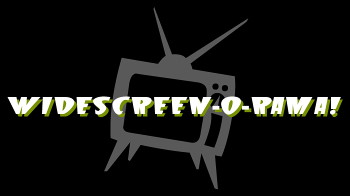 |
| All
About Aspect Ratios (And Why Widescreen Really Is Better) back to The Ultimate Guide to Anamorphic Widescreen DVD |
| I'm
sure by now, most of you know that when you go to see a movie in a
theater, the screen you watch movies on is shaped differently than your
TV screen at home. Properly shown movies appear to be much wider-looking
than television programs do. There's a reason for that, and it's all
about something called aspect ratios. So just what exactly are aspect ratios, and how did they come to be? Well sit right back, and I'll tell you the whole story... The Way Movies Looked Before the 1950s Way back at the beginning of motion picture history, movies all looked roughly the same shape when projected in a theater. The relationship between the width of a film image and its height is known as its aspect ratio, and from the early days of film (starting in the late-1890s) until the early-1950s, almost all films had a standard aspect ratio of 1.33:1 (technically, it was actually 1.37:1, but 1.33:1 is the recognized standard). In other words, the film image was 1.33 times as wide as it was tall (another way to denote this is 4x3, meaning 4 units of width for every 3 of height). |
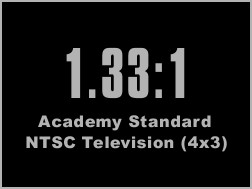 |
This eventually became known as Academy Standard (when it was recognized formally by the Academy of Motion Picture Arts and Sciences in the 1930s). Almost every classic film you can think of from this period of time appeared in this ratio. The examples you see below are actual screen shots (taken from DVD) of 4 films in their original Academy Standard aspect ratio. |
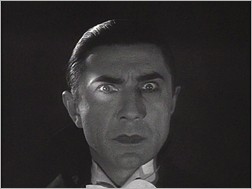
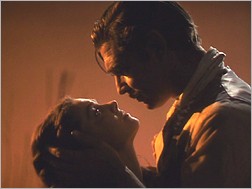
Above (L to R): Universal's Dracula (1931) and MGM's Gone With the Wind (1939)
Below (L to R): Warner's The Wizard of Oz (1939) and Republic's It's a Wonderful Life (1946)
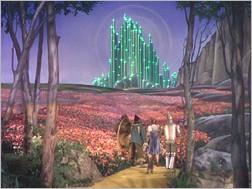
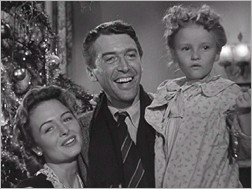
When it comes to transferring to home video films shot in the Academy Standard aspect ratio, there's no problem at all. Why? Well, you may have noticed that Academy Standard is shaped an awful lot like your current TV set. That's because when it came time for the television industry to decide what shape TV would take (in the early 1950s), the National Television Standards Committee (NTSC) selected Academy Standard as the official aspect ratio for TV broadcasting here in the United States (the current TV standard here in the U.S. is also called NTSC, after the organization that set the standard). You'll remember that we mentioned "4x3" a few minutes ago - that's how many people in the industry refer to current TVs. But once TV began capturing the imagination of American consumers, the Hollywood film industry was faced with a problem: so many people were buying TVs and staying at home to watch them, that theater attendance began to decline dramatically. So the studios began making some changes to the look of their movies. The Way Movies Looked After the 1950s... and Still Do Today What Hollywood began to do, was to experiment with making films in three-dimension (3D) and widescreen aspect ratios. Some of you may remember 3D films, which required that you wear a pair of rather silly looking stereoscopic glasses (one of the plastic filters the glasses used for "lenses" was blue and one was red). Experiments with both 3D and widescreen in films had been occurring since the early 1920s, but it was the 50s that they really took off. Sadly (and thankfully!), 3D was nothing more than a passing fad, but widescreen was here to stay. In 1953, 20th Century Fox introduced the world to the CinemaScope, which was used by many studios between 1953 and 1967 (it eventually gave way to Panavision, which is the most used widescreen process today). In 1953, there were some 5 films released in a widescreen aspect ratio. By the following year, there were nearly 40. And by 1955, the number had exploded to more than 100. Today, widescreen dominates American filmmaking in a variety of aspect ratios. But there are two "standardized" ratios that are by far the most common: Academy Flat (1.85:1) and Anamorphic Scope (2.35:1). Other less used ratios include 1.66:1 and 2.20:1 (70mm), but we'll stick to 1.85:1 and 2.35:1 for the purposes of our discussion. |
|
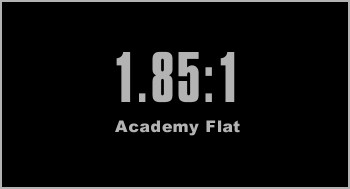 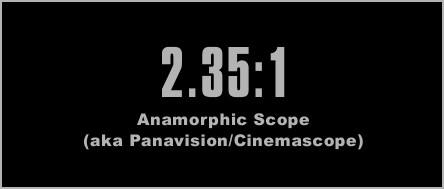 |
|
In the case of Academy Flat, the film is 1.85 times as wide as it is tall (it's often referred to today as simply "Flat"). Anamorphic Scope is even wider, 2.35 times as wide as it is tall (it's usually called "Scope"). Some familiar films shot in the Flat aspect ratio include The English Patient, All the President's Men and The Birds. Scope films include Star Wars, Apocalypse Now and Blade Runner. Note the examples below. |
|
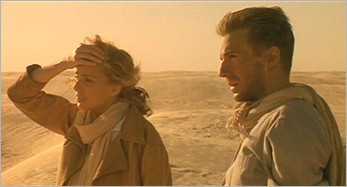 Above: Miramax's The English Patient (1996) in Academy Flat (1.85:1). Below: Fox's The Thin Red Line (1998) in Anamorphic Scope (2.35:1). 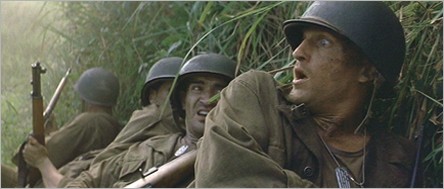 |
|
There can be no doubt that widescreen films convey much more dynamic imagery, with the wider aspect ratio working to enhance the dramatic impact of the film upon the viewer. But when it comes time to transfer such films to home video, there's a problem with those wider aspect ratios - they're too wide to fill the TV screen vertically if you're seeing the whole image horizontally. As you've learned if you've been reading our Ultimate Guide to Anamorphic Widescreen DVD, there have been two primary ways to deal with this problem: pan & scan and letterbox transfers. The pan & scan process has the video camera scanning back and forth during the transfer to keep the most important action centered on your TV screen (on DVD packaging, this is rarely referred to as pan & scan. More often you see the words "full frame", which often - but not always - indicates a pan & scan transfer. Basically, it means that the film has been "modified" in some way to fit you TV screen completely). The problem with this, is that you may lose as much as 50% of the original film image and the widescreen-oriented composition is lost completely. Most serious film enthusiasts prefer the letterbox format, in which the ENTIRE film image is presented, and black bars fill the unused screen area at the top and bottom of the frame (see examples below). |
|
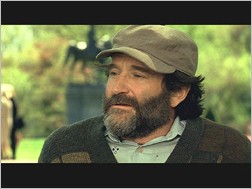 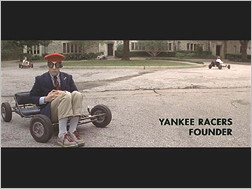 Examples of the letterbox presentation of a 1.85:1 film (Good Will Hunting - left) and a 2.35:1 film (Rushmore - right) on a Standard 4x3 TV. Both films are from Miramax. |
|
While some vertical picture resolution is sacrificed, the director's original widescreen composition is preserved - you're seeing the WHOLE film, as you were meant to. Why would you want to see the film in any other way? But as we all know, there are still some folks who prefer the picture to fill their TV screen completely. You know the ones - the folks who see letterboxed video and say, "Why are those black bars there? Something must be wrong with the TV." Personally, I maintain that if these people really knew what they were missing by watching a "full frame" version of a widescreen film, they would change their minds in a hurry. I've converted lots of people to letterbox, simply by showing them the difference between the full frame and widescreen versions on a DVD that includes both formats. Let's take a look at some comparisons between full frame and widescreen film presentation. As you'll soon see, being able to see the whole widescreen image makes a HUGE difference. There's just no comparison. |
|
on to Widescreen-o-Rama! (Page 2) |